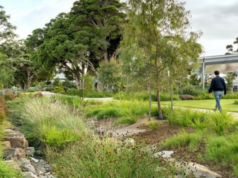By David Jenkins
Canada often serves as an interesting point of comparison for Australia.
Both countries have comparatively small populations over huge areas and are part of the so called cultural Anglosphere.
Canadians and Australians often find they have a lot in common when it comes to approaches to key issues, so it is a worthwhile exercise to use Canada as something of a benchmark for Australia in terms of efforts to promote ‘green infrastructure’ projects.
At the government level, Infrastructure Canada spent C$735 million over the last decade through its Green Infrastructure Fund, which supports environmental infrastructure projects to promote the reduction in greenhouse gas emissions, cleaner air, cleaner water and cleaner land.
Infrastructure Canada works alongside the Canada Infrastructure Bank, which attracts private capital and often partners with government in public-private partnerships.
The Green Infrastructure Fund supported the completion of water and wastewater infrastructure, disaster mitigation and adaptation projects, building retrofits, solid waste treatment, and the installation of electric vehicle charging stations and other refuelling stations.
The government is funding the Green Municipal Fund, a C$1.6 billion initiative which provides funding, resources and training to Canada’s 3700 municipalities to help them switch to sustainable practices.
Before the Green Municipal Fund, there was the Low Carbon Cities Canada program which was delivered with the Federation of Canadian Municipalities. Originally planned for five years, the program was extended to eight years and saw C$110 million in national funds committed.
Low Carbon Cities Canada funded over 1600 projects and has trained thousands of people in recognition that sustainable infrastructure needs to be delivered by skilled people, and this capacity also needs investment.
Canada has emerged as a leader in the area of natural asset management, the idea of including assets such as creeks and woodlands and integrating them into wider planning.
It is an innovative approach which begins at a starting point that asset management is fundamentally about service delivery with the end goal of delivering those services effectively and also sustainably.
The 2021 budget committed C$200 million over three years to Infrastructure Canada to establish a Natural Infrastructure Fund for these types of projects.
Beginning with a project around an aquifer in the town of Gibsons in British Columbia, the initiative now counts around 100 natural asset projects throughout Canada.
In the Gibsons’ project the town’s managers included the town aquifer in their asset management plan to provide water storage and filtration, while also delivering drinking water so pure it meets health standards without any chemical treatment.
Pushing this agenda is not-for-profit organization the Natural Assets Initiative, which is lobbying for accounting changes and documentation as Canada develops a proven framework in the area of natural assets.
No two countries are the same, of course, and Canada has some characteristics – such as climate – which are very different from Australia.
There are examples of Canada’s approach, however, which provide valuable points of comparison for Australia as we face the sustainability challenges of the future.














